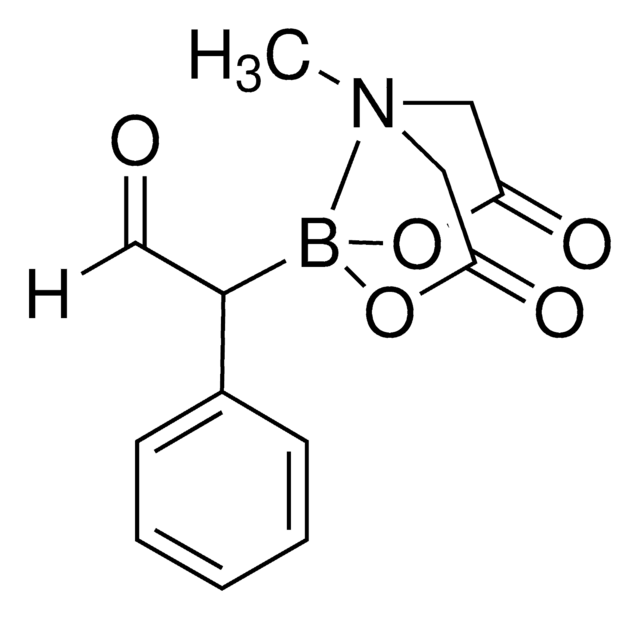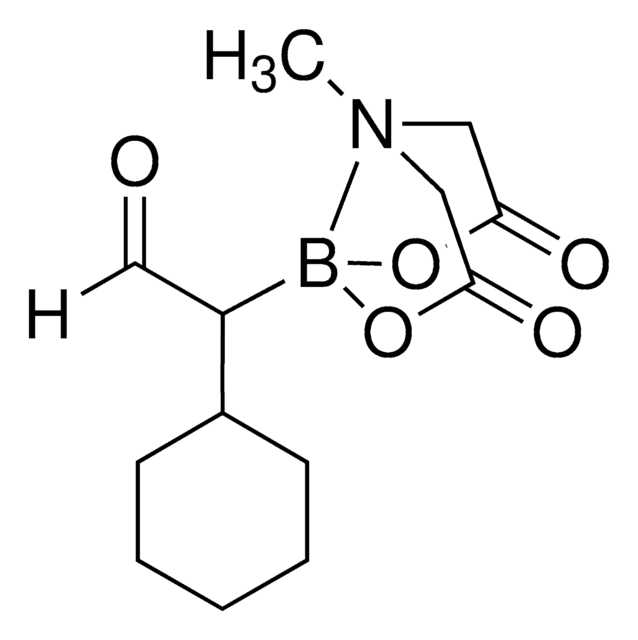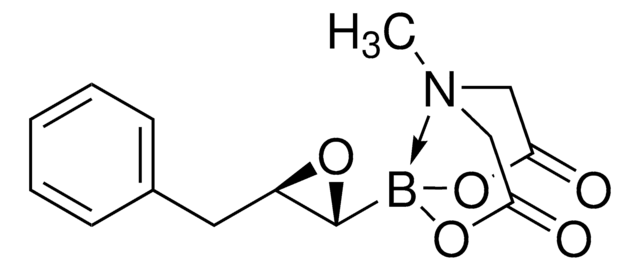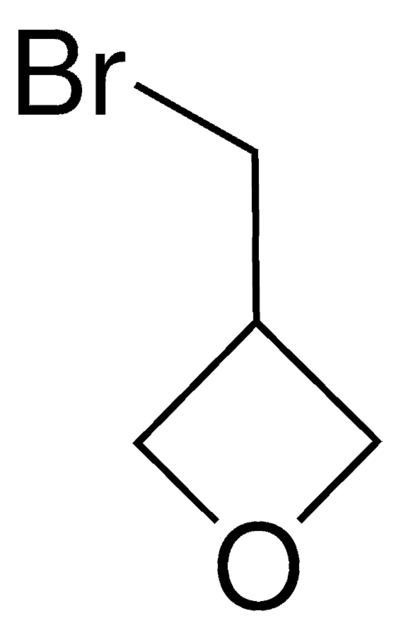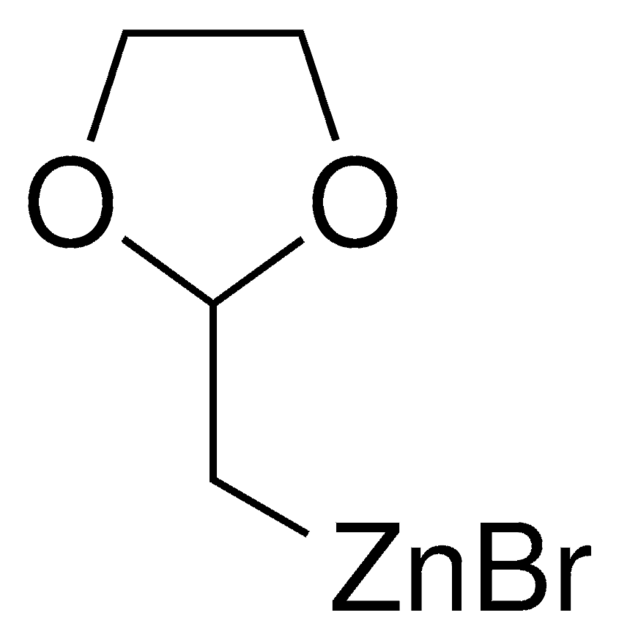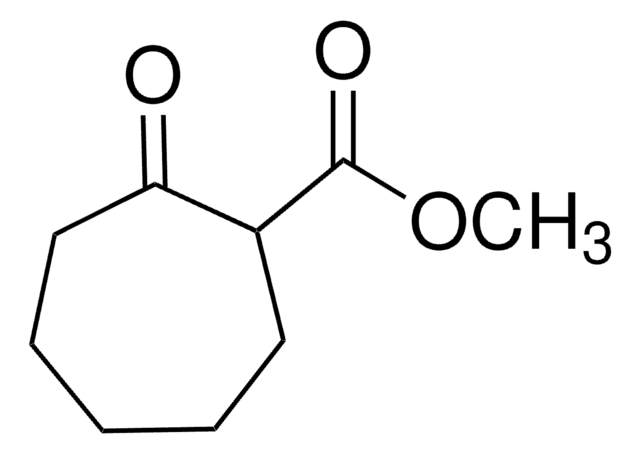793434
4-Tolyl-α-MIDA-boryl aldehyde
Synonym(s):
(6-Methyl-4,8-dioxo-1,3,6,2-dioxazaborocan-2-yl)(4-methylphenyl)acetaldehyde
About This Item
Recommended Products
form
solid
mp
135-142 °C
storage temp.
2-8°C
SMILES string
O=C1OB(C(C2=CC=C(C)C=C2)C([H])=O)OC(CN(C)C1)=O
InChI
1S/C14H16BNO5/c1-10-3-5-11(6-4-10)12(9-17)15-20-13(18)7-16(2)8-14(19)21-15/h3-6,9,12H,7-8H2,1-2H3
InChI key
DCVSWHVQPHHNBM-UHFFFAOYSA-N
Looking for similar products? Visit Product Comparison Guide
General description
Application
Other Notes
Storage Class Code
11 - Combustible Solids
WGK
WGK 3
Flash Point(F)
Not applicable
Flash Point(C)
Not applicable
Certificates of Analysis (COA)
Search for Certificates of Analysis (COA) by entering the products Lot/Batch Number. Lot and Batch Numbers can be found on a product’s label following the words ‘Lot’ or ‘Batch’.
Already Own This Product?
Find documentation for the products that you have recently purchased in the Document Library.
Related Content
The Yudin laboratory is known for the development of amphoteric molecules and their application in synthesis. The corresponding reagents possess nucleophilic and electrophilic functional groups that do not prematurely react with each other.
Our team of scientists has experience in all areas of research including Life Science, Material Science, Chemical Synthesis, Chromatography, Analytical and many others.
Contact Technical Service